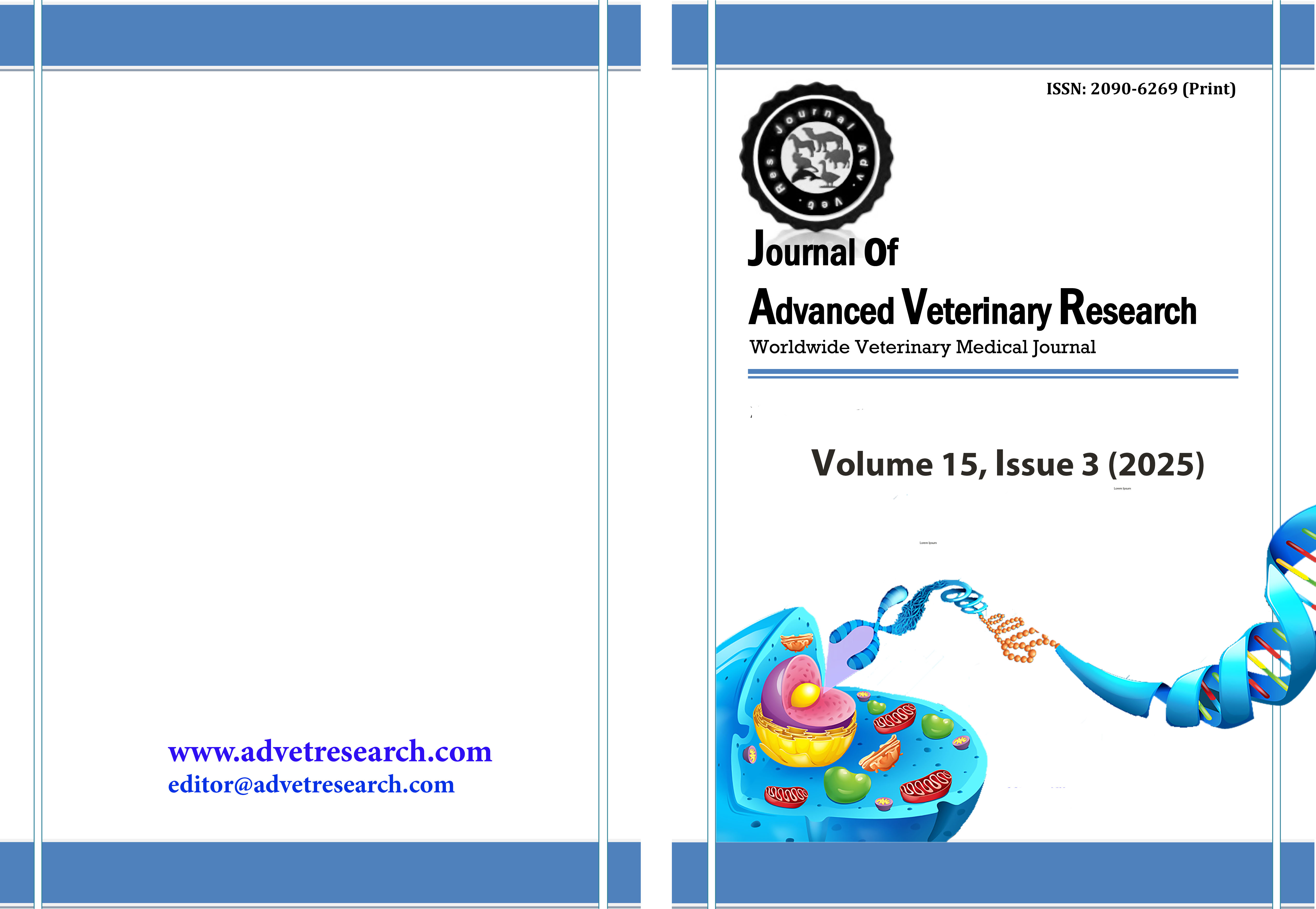Field study on clinical, surgical and economical assessments of urine retention in calves
Keywords:
Calves, Surgical Intervention, Urine Retention, Urolithiasis, UroperitoneumAbstract
Urine retention is a prevalent and economically significant condition among male calves, particularly in developing countries where ruminants serve critical agricultural and socio-economic roles. This study aimed to clinically, surgically, biochemically, and economically assess obstructive urolithiasis in male calves, evaluating the efficacy and feasibility of various surgical interventions. Seventeen male calves aged 1–12 months and six apparently healthy calves were categorized into three groups: healthy controls (n=6), calves with intact distended bladders (n=5), and those with ruptured bladders (n=12). Clinical examinations and biochemical profiling were conducted preoperatively. Surgical interventions included pre-scrotal urethrostomy for intact bladders and cystoplasty with dorsal urethrotomy for ruptured bladders. Results indicated that bladder rupture was associated with younger age, lower body weight, and delayed urine retention. The sigmoid flexure was the predominant site of obstruction, with clinical signs varying by bladder status. Seasonal patterns indicated a spring peak in incidence, linked to nutritional and hydration shifts. Biochemically, ruptured cases exhibited marked elevations in urea, creatinine, uric acid, potassium, phosphorus, and magnesium levels, reflecting systemic derangement. Postoperative complications were minimal but more frequent in ruptured cases. The majority of the stones were calcium carbonate and phosphate. Stone size and volume positively correlated with calf body weight, suggesting dietary and metabolic influences. Surgical resolution, combined with targeted medical therapy, proved effective in restoring urinary function and preventing recurrence or mortality. The study underscores the importance of early diagnosis, surgical intervention, and preventive strategies such as dietary adjustments and urine acidification to mitigate recurrence and avoid economic losses.
Downloads
Published
How to Cite
Issue
Section
License
Copyright (c) 2025 Journal of Advanced Veterinary Research

This work is licensed under a Creative Commons Attribution-NonCommercial-NoDerivatives 4.0 International License.
Users have the right to read, download, copy, distribute, print, search, or link to the full texts of articles under the following conditions: Creative Commons Attribution-NonCommercial-NoDerivatives 4.0 International (CC BY-NC-ND 4.0).
Attribution-NonCommercial-NoDerivs
CC BY-NC-ND
This work is licensed under a Creative Commons Attribution-NonCommercial-NoDerivatives 4.0 International (CC BY-NC-ND 4.0) license




